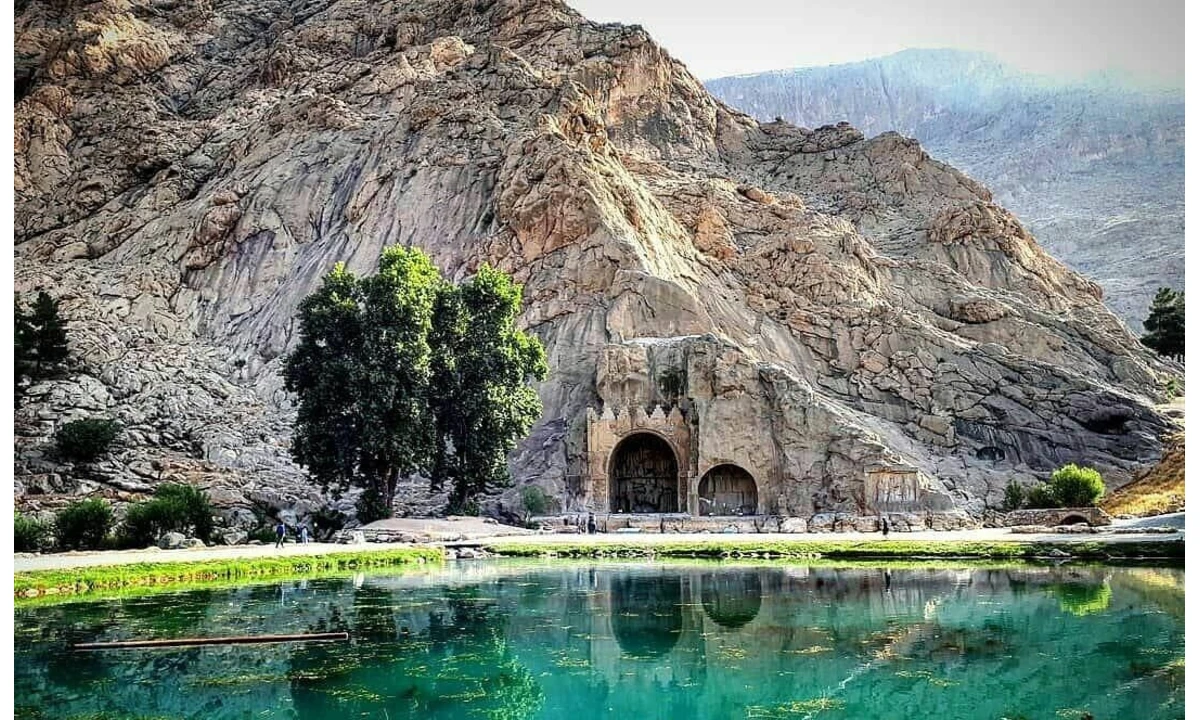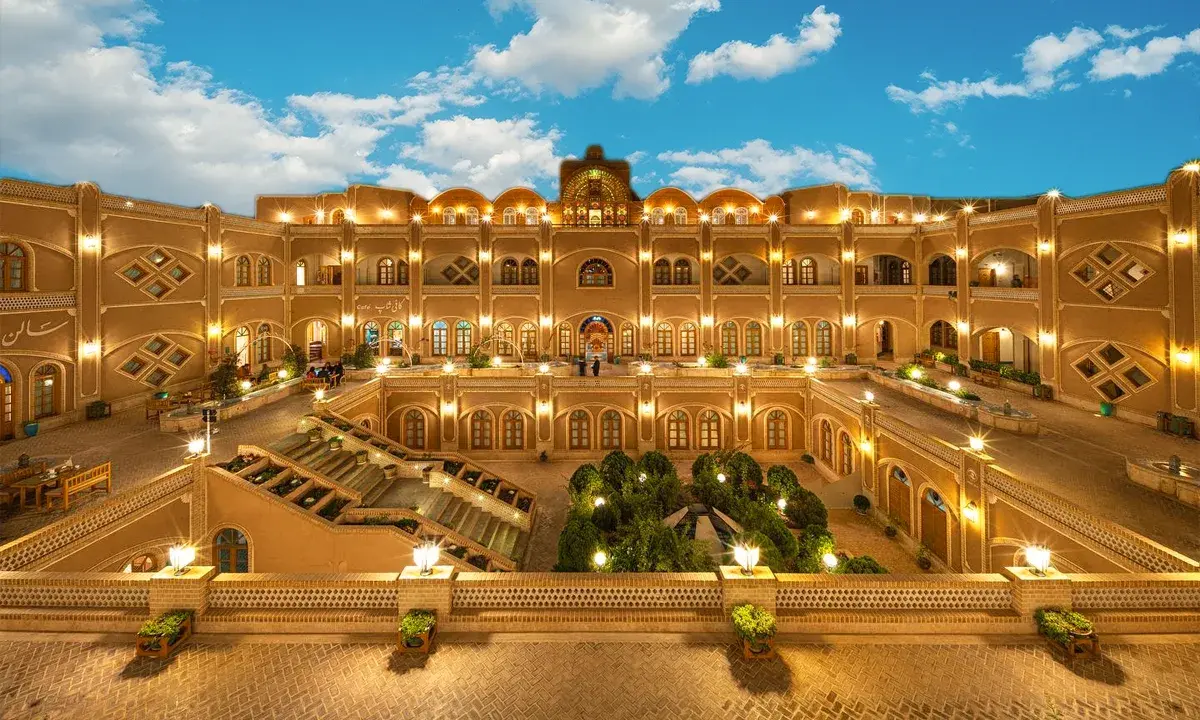Ganjnameh Tourist Resort Complex
![]() Author : Alirezaa | Date : Wednesday 27 November 2024 09:20
Author : Alirezaa | Date : Wednesday 27 November 2024 09:20
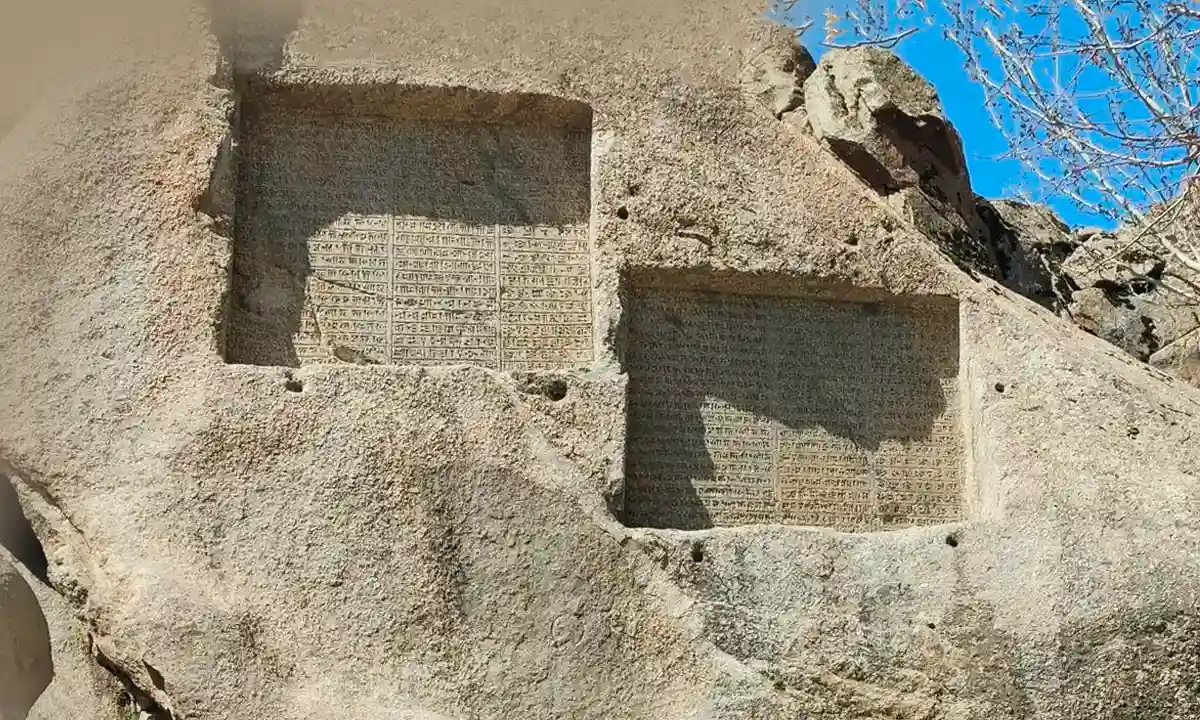
Ganjnameh, located in the vicinity of Hamadan, Iran, is an ancient site renowned for its inscriptions carved into the rock face of Mount Alvand. These inscriptions, attributed to Darius the Great and his son Xerxes I, date back to the Achaemenid Empire, around 500 BCE. Written in three languages—Old Persian, Neo-Babylonian, and Neo-Elamite—they were intended to communicate the emperors' power and achievements to a diverse audience. This site not only offers a glimpse into the administrative and cultural practices of one of history's most significant empires but also highlights the Achaemenids' sophistication in governance and communication.
Geographically, Ganjnameh is situated in an area that blends natural beauty with historical depth, making it a critical component of Iran's cultural and natural heritage. It's nestled in a region that serves as a testament to the ancient civilization's grandeur and its integration with the natural landscape. The inscriptions' location on a major historical route further underscores their strategic importance for propaganda and message dissemination. Ganjnameh's preservation and study provide invaluable insights into ancient Persian languages, the Achaemenid Empire's history, and the broader narrative of human civilization in the Iranian plateau.
Getting to Ganjnameh
Ganjnameh is easily accessible from various parts of Iran, especially from major cities like Tehran and Hamadan. Here’s a straightforward guide to help you reach this historical treasure.
From Tehran to Ganjnameh
- By Car: The most direct route from Tehran to Ganjnameh involves taking the Tehran-Hamadan Expressway, which is approximately 400 kilometers long. The journey typically takes around 4 to 5 hours, depending on traffic. Once in Hamadan, follow the signs towards Ganjnameh, which is located about 12 kilometers southwest of the city center.
- By Bus: Regular bus services connect Tehran to Hamadan. Buses depart from Tehran’s West Terminal, with the journey taking about 5 to 6 hours. Upon reaching Hamadan, you can catch a local taxi to Ganjnameh.
- By Plane: For those looking for a quicker route, flights from Tehran to Hamadan Airport are available. From the airport, it's a short taxi ride to the city center, where you can then take another taxi directly to Ganjnameh.
From Hamadan to Ganjnameh
- By Taxi: The most convenient way to get to Ganjnameh from Hamadan is by taxi. It’s a short, scenic ride to the site, and taxis can be easily found in the city.
- Public Transportation: Although there’s no direct public bus line to Ganjnameh, local taxis or minibusses from Hamadan are an affordable and practical option.
✔️Read More : Travel to Hamadan; the Capital of Asian Tourism
Parking Facilities for Visitors
For those driving to Ganjnameh, there are designated parking areas near the entrance of the site. These facilities are convenient for visitors, providing easy access to the inscriptions and the surrounding attractions. Parking is typically available for a nominal fee, ensuring that visitors have a secure spot for their vehicles while exploring the area.
Best Times to Visit Ganjnameh
Ganjnameh is situated in a region where the climate can significantly influence your visit. Here's an overview of what to expect weather-wise throughout the year and the recommended times to plan your trip.
Climate Overview
- Spring (March to May): This season is arguably the best time to visit Ganjnameh. The weather is mild, with temperatures ranging from 10°C to 20°C (50°F to 68°F). The surrounding landscape is lush and green, making it an ideal time for hiking and outdoor activities.
- Summer (June to August): Summers can be warm, with temperatures often reaching up to 30°C (86°F). However, the area's altitude keeps it cooler than other parts of Iran. Early summer continues to be a good time to visit, especially for those looking to escape the heat of the plains.
- Autumn (September to November): Autumn brings cooler temperatures and the changing colors of the foliage, offering a picturesque backdrop for the ancient inscriptions. Temperatures range from 15°C to 25°C (59°F to 77°F), making it a pleasant time for sightseeing.
- Winter (December to February): Winters can be cold, with temperatures dropping below freezing, especially at night. Snowfall is common, which might appeal to winter sports enthusiasts but can limit access to the inscriptions.
Recommended Visiting Seasons
- Spring and Autumn: These seasons are highly recommended for visiting Ganjnameh. The comfortable climate, combined with the natural beauty of the region, enhances the overall experience. Additionally, these months avoid the peak summer tourist season, allowing for a more serene visit.
- Local Events: It's also worth considering local events and holidays that might coincide with your visit. For example, the Nowruz (Persian New Year) celebrations in late March can add a cultural dimension to your trip, although it might also mean more visitors to the site.
In summary, the best times to visit Ganjnameh are during the spring and autumn months when the weather is favorable, and the natural and cultural settings are at their most vibrant. Always check the local weather and event schedules before planning your trip to ensure the best possible experience.
✔️Read More : When is the best time to visit Iran? | 2024 update
What to See and Do at Ganjnameh
Ganjnameh offers a unique blend of historical, cultural, and natural attractions. Here’s what visitors can look forward to:
Ancient Inscriptions
The main attractions at Ganjnameh are the ancient inscriptions carved into the rock face of Mount Alvand. These inscriptions, dating back to the Achaemenid Empire (circa 500 BCE), were commissioned by Darius the Great and his son Xerxes I. They are etched in three ancient languages: Old Persian, Neo-Babylonian, and Neo-Elamite.
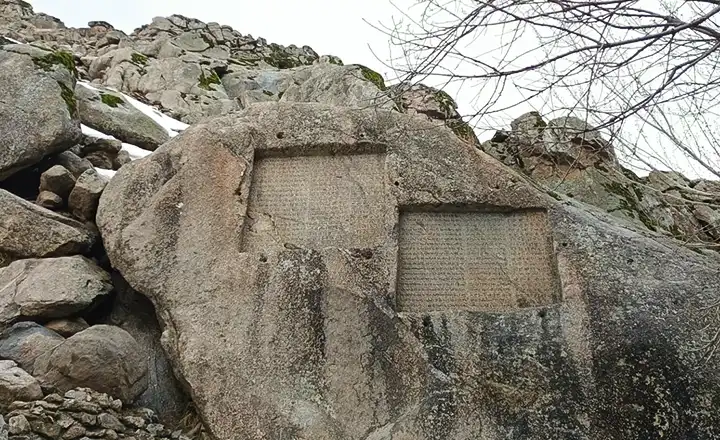
- Significance: These inscriptions serve as royal decrees, proclaiming the emperors' lineage, achievements, and the divine justification for their rule. They are among the few Achaemenid inscriptions found in Iran, offering invaluable insights into the empire's history, language, and administration.
- What to Look For: Pay attention to the trilingual format of the inscriptions, a testament to the multicultural nature of the Achaemenid Empire. The detailed carving and preservation of these texts provide a fascinating glimpse into ancient stone-working techniques.
Surrounding Area
- Natural Beauty: The site is surrounded by the stunning landscape of the Alvand mountain range. The region's natural beauty is complemented by lush valleys, flowing streams, and a diverse array of flora and fauna.
- Waterfalls and Parks: Nearby, the Abbas Abad Valley and Makhmal Kooh offer scenic vistas, waterfalls, and walking paths. These areas are perfect for picnics, hiking, and simply enjoying the serene beauty of nature.
- Recreational Activities: For the more adventurous, the surrounding mountains offer opportunities for rock climbing and trekking. The winter months transform the area into a popular spot for snow sports.
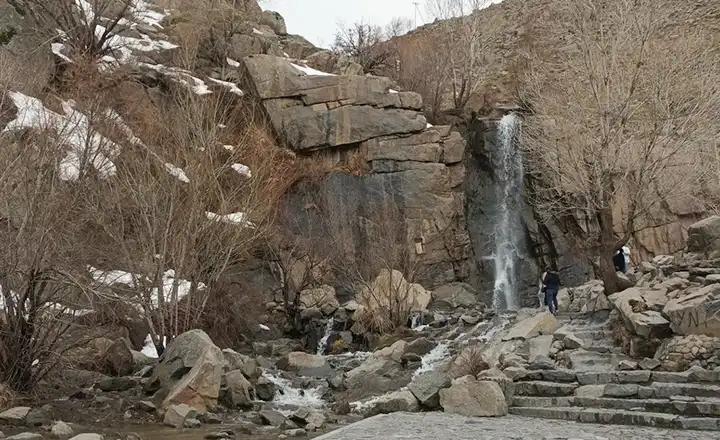
Cultural Significance
- Historical Context: Understanding the context and content of the Ganjnameh inscriptions deepens the appreciation of their significance. They are not merely historical artifacts but are a direct link to the thoughts, language, and ambitions of a civilization that laid the foundations for much of Western and Middle Eastern cultures.
- Guided Tours: To fully grasp the historical and cultural significance of the inscriptions, consider joining a guided tour. Local experts can provide insights into the Achaemenid Empire, the significance of the inscriptions, and their impact on Persian heritage.
Visiting Ganjnameh is an enriching experience that combines the allure of ancient history with the natural beauty of Iran’s landscape. Whether you’re deciphering ancient texts, exploring the lush surroundings, or delving into the rich tapestry of Persian culture, Ganjnameh promises a memorable adventure.
Tours and Activities at Ganjnameh
Ganjnameh and its surroundings offer a variety of tours and activities catering to history buffs, nature lovers, and adventure seekers alike. Here’s what visitors can look forward to:
Guided Tour Options
- History Tours: These tours focus on the ancient inscriptions of Ganjnameh, offering insights into their creation, significance, and the history of the Achaemenid Empire. Guided history tours are an excellent way to deepen your understanding of Persian heritage and the site's role in ancient times.
- Nature and Photography Tours: For those captivated by the natural beauty of the area, nature tours explore the scenic landscapes, flora, and fauna around Ganjnameh. Photography tours are also available, guiding enthusiasts to the most picturesque locations to capture the perfect shot of the inscriptions, waterfalls, and mountain vistas.
- Cultural Tours: These tours provide a broader look at the local culture, traditions, and modern-day significance of the area, often including visits to nearby villages or markets.
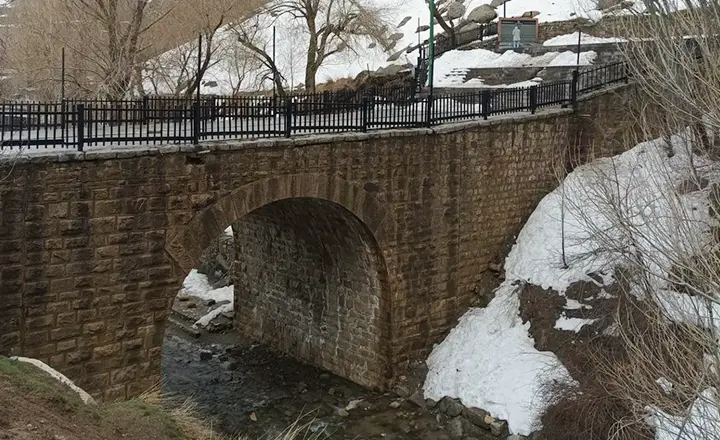
Nearby Attractions Worth Visiting
- Alvand Mountain: A trekking and climbing destination offering breathtaking views and challenging climbs.
- Abbas Abad Valley: Known for its lush scenery and waterfalls, it's an ideal spot for picnics and leisurely walks.
- Tarik Dareh Ski Resort: During the winter months, this resort becomes a hub for skiing and snowboarding enthusiasts.
Adventure Activities
- Hiking: The trails around Ganjnameh and the Alvand mountain range cater to hikers of all skill levels, offering a chance to explore the natural beauty of the region.
- Rock Climbing: The rugged terrain of the Alvand mountains provides numerous rock climbing opportunities, from beginner-friendly routes to challenging ascents for experienced climbers.
- Cycling: The roads and trails around Ganjnameh are perfect for mountain biking, offering a unique way to explore the area's landscapes.
Whether you’re looking to delve into the rich tapestry of Persian history, capture the natural beauty of Iran, or embark on outdoor adventures, Ganjnameh has something for everyone. These tours and activities not only enhance the visitor experience but also provide a deeper connection to this historic and naturally beautiful region.
Tips for Visitors to Ganjnameh
Visiting Ganjnameh is an enriching experience, blending historical exploration with natural beauty. To ensure a respectful and enjoyable visit for yourself and others, here are some essential tips:
Entrance Fees
There will be no entrance fee to view the Ganjnameh inscriptions themselves. However, fees could apply to certain nearby attractions, museums, or parks. Always check the latest information before your visit as policies and fees can change.
Preserving the Site
- Do Not Touch the Inscriptions: The ancient texts are delicate and can be damaged by touch. Always admire them from a distance.
- Follow Designated Paths: To protect both the natural environment and archaeological integrity, stick to marked trails and areas.
- Litter-Free Zone: Ensure you take all your trash with you or dispose of it in designated bins. Preserving the site’s cleanliness is crucial for its conservation and enjoyment by future visitors.
- Photography: Taking photos is encouraged, but use natural light where possible. Flash photography can be harmful over time and is often prohibited in sensitive areas.
Cultural Etiquette and Respectful Behavior
- Dress Appropriately: When visiting Ganjnameh and surrounding areas, especially rural or conservative regions, dressing modestly is recommended. Long sleeves and avoiding shorts are good practices.
- Respect Local Customs: Be mindful of local customs and traditions. Showing interest in and respect for local practices is appreciated.
- Language: While not a requirement, learning a few basic Persian phrases to communicate greetings and thanks can greatly enhance your interaction with locals.
- Environmental Respect: The area around Ganjnameh is of significant natural beauty. Respecting the environment, not disturbing wildlife, and adhering to conservation guidelines are crucial.
By following these tips, visitors can ensure that their trip to Ganjnameh is enjoyable, and respectful, and leaves a minimal footprint on the site's historical and natural resources.
Last Word
Visiting Ganjnameh offers a unique opportunity to connect with the ancient world through its awe-inspiring inscriptions and to immerse oneself in the breathtaking natural beauty of Iran. Beyond the historical significance of the Achaemenid inscriptions, the surrounding area invites visitors to explore diverse landscapes, from lush valleys to rugged mountain terrains. It's a chance not only to witness history carved in stone but also to engage with the rich local culture, traditions, and cuisine of the Hamadan region. By exploring beyond the inscriptions, visitors enrich their understanding and appreciation of Iran's heritage and natural wonders, making a trip to Ganjnameh a memorable journey through time and nature.




